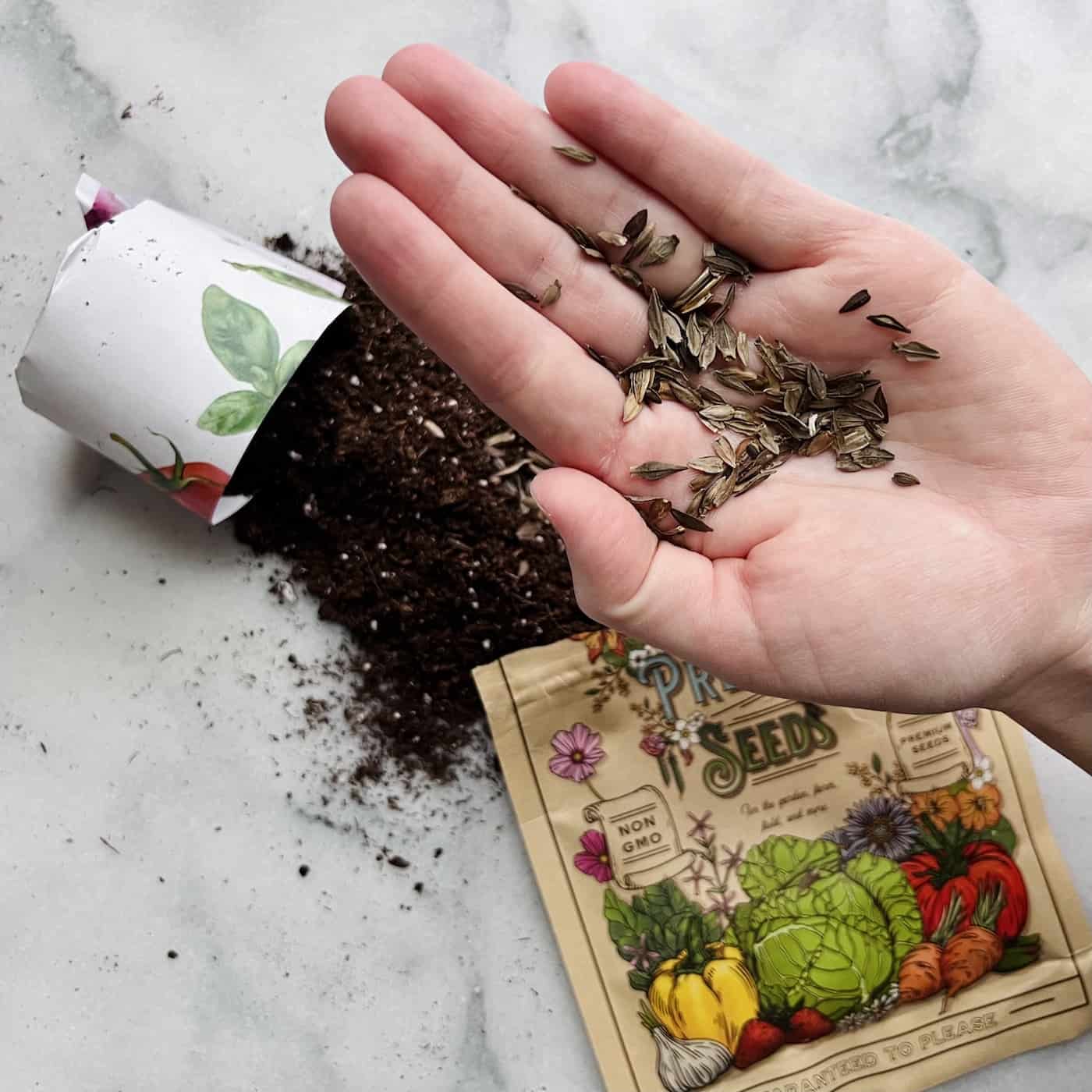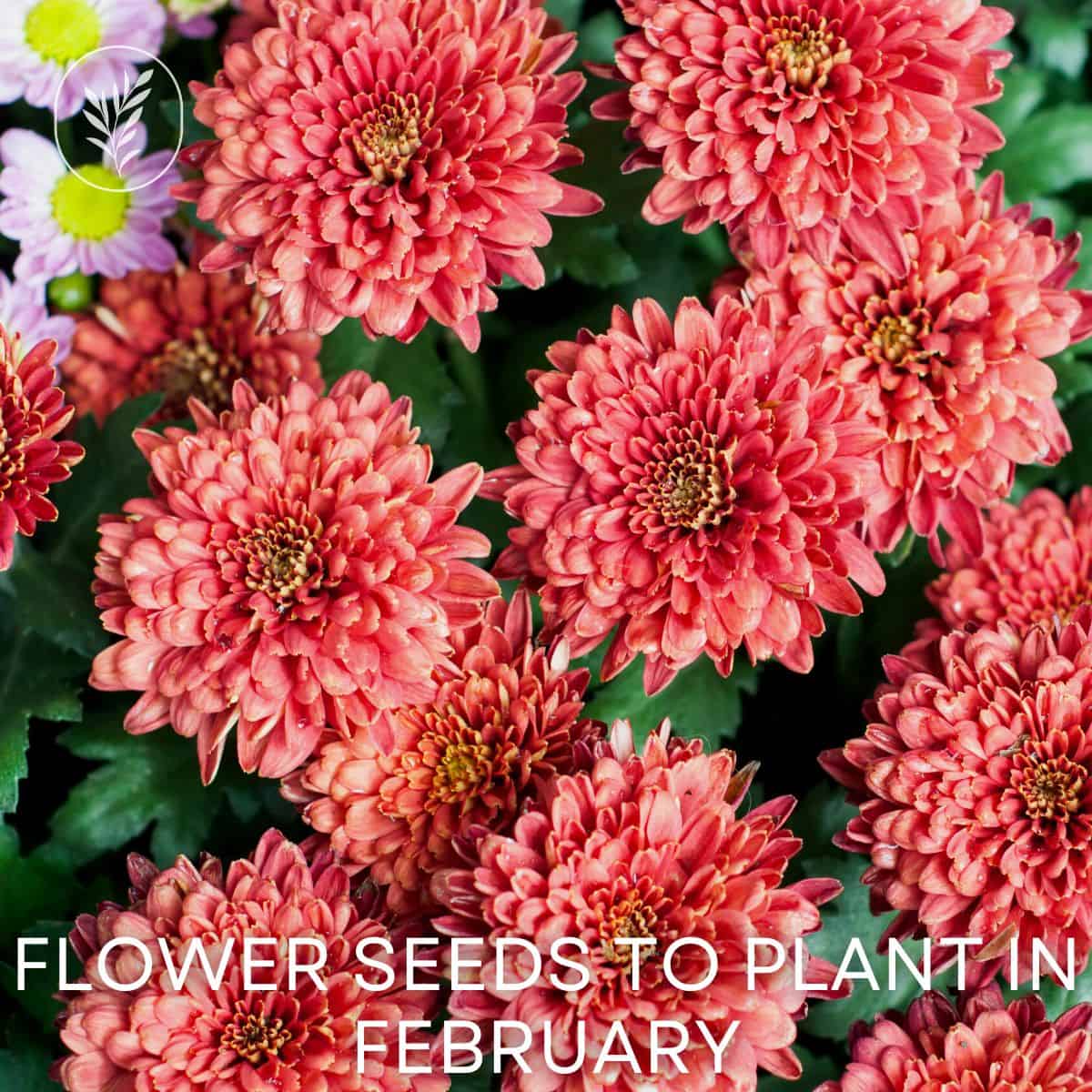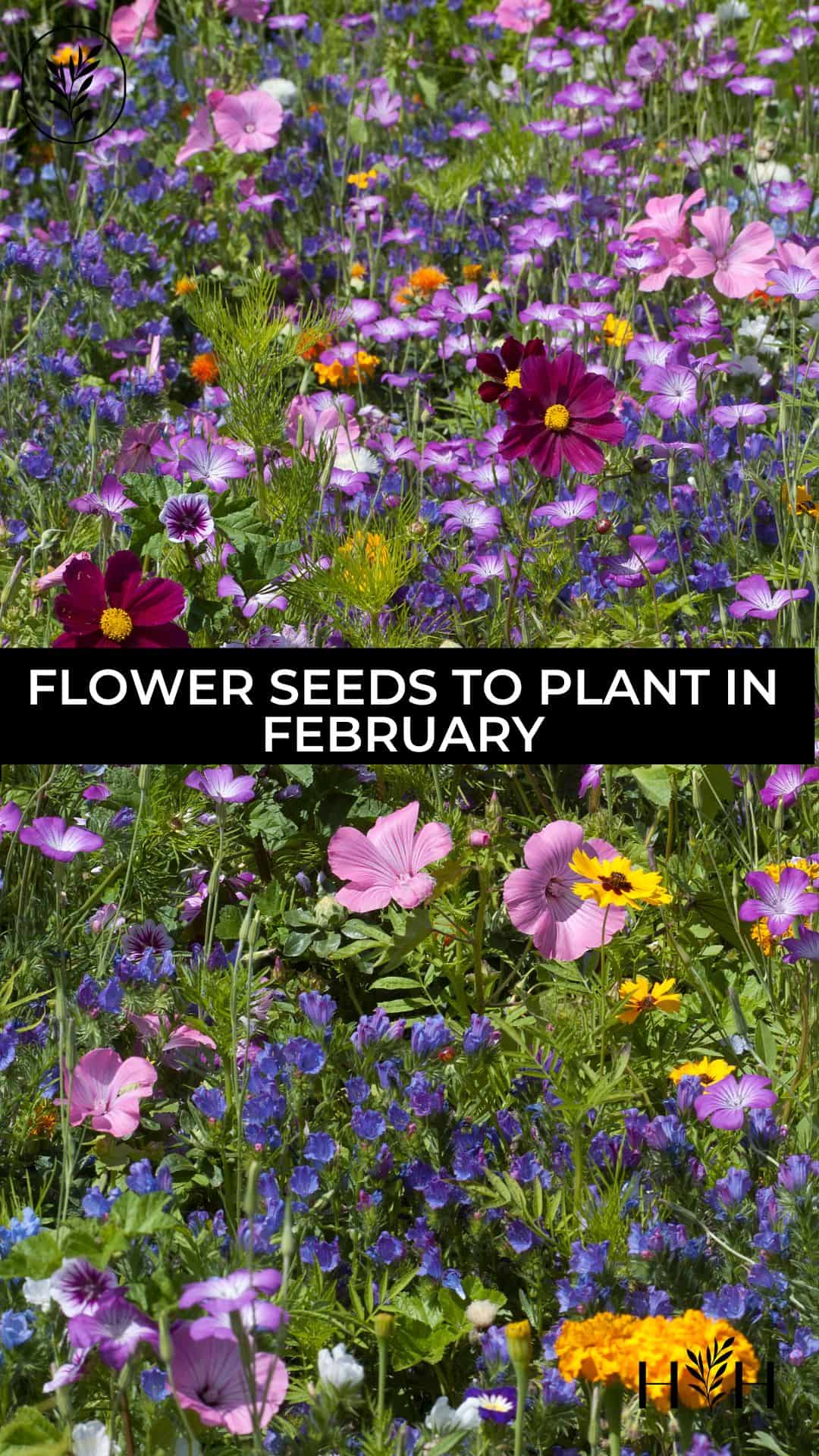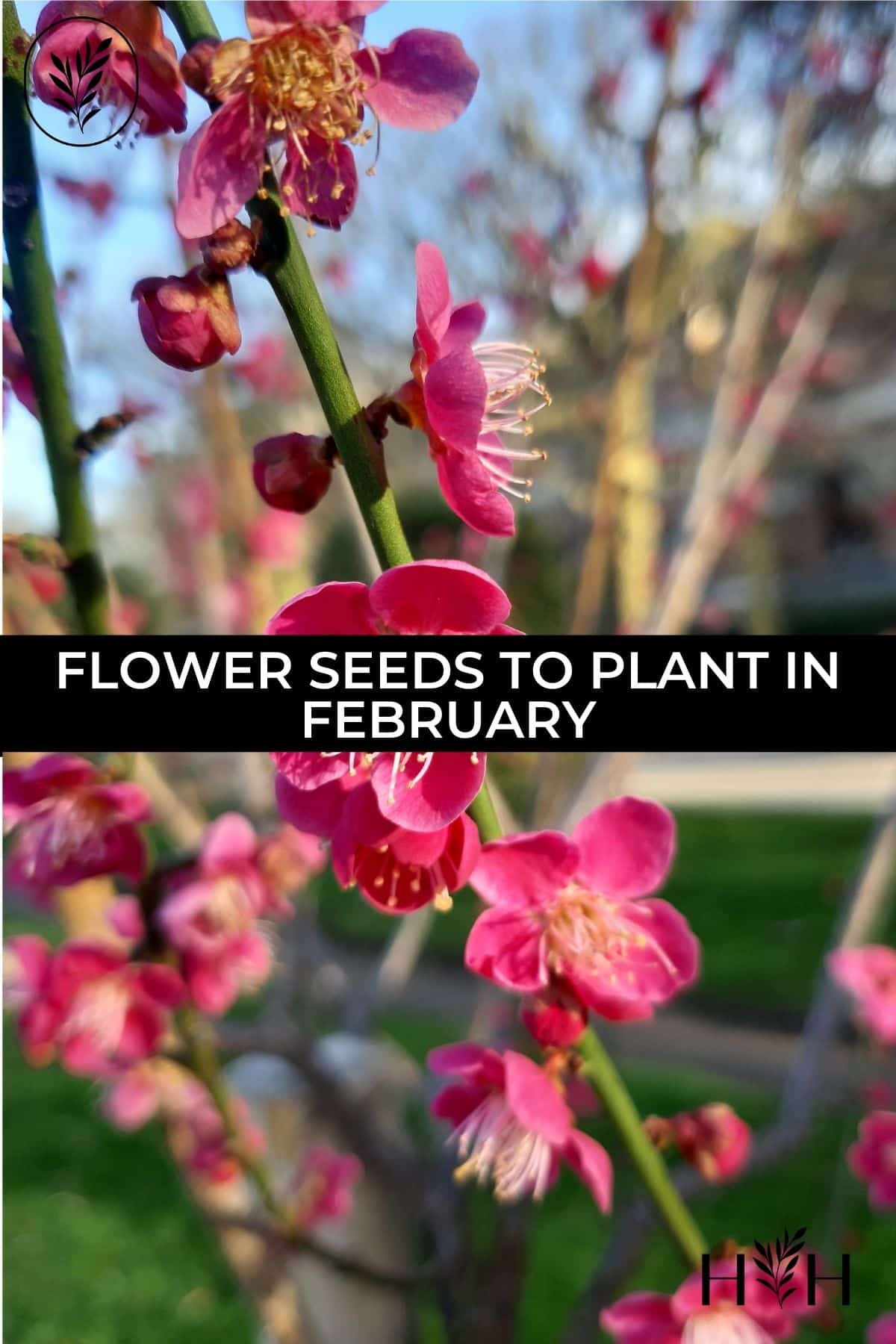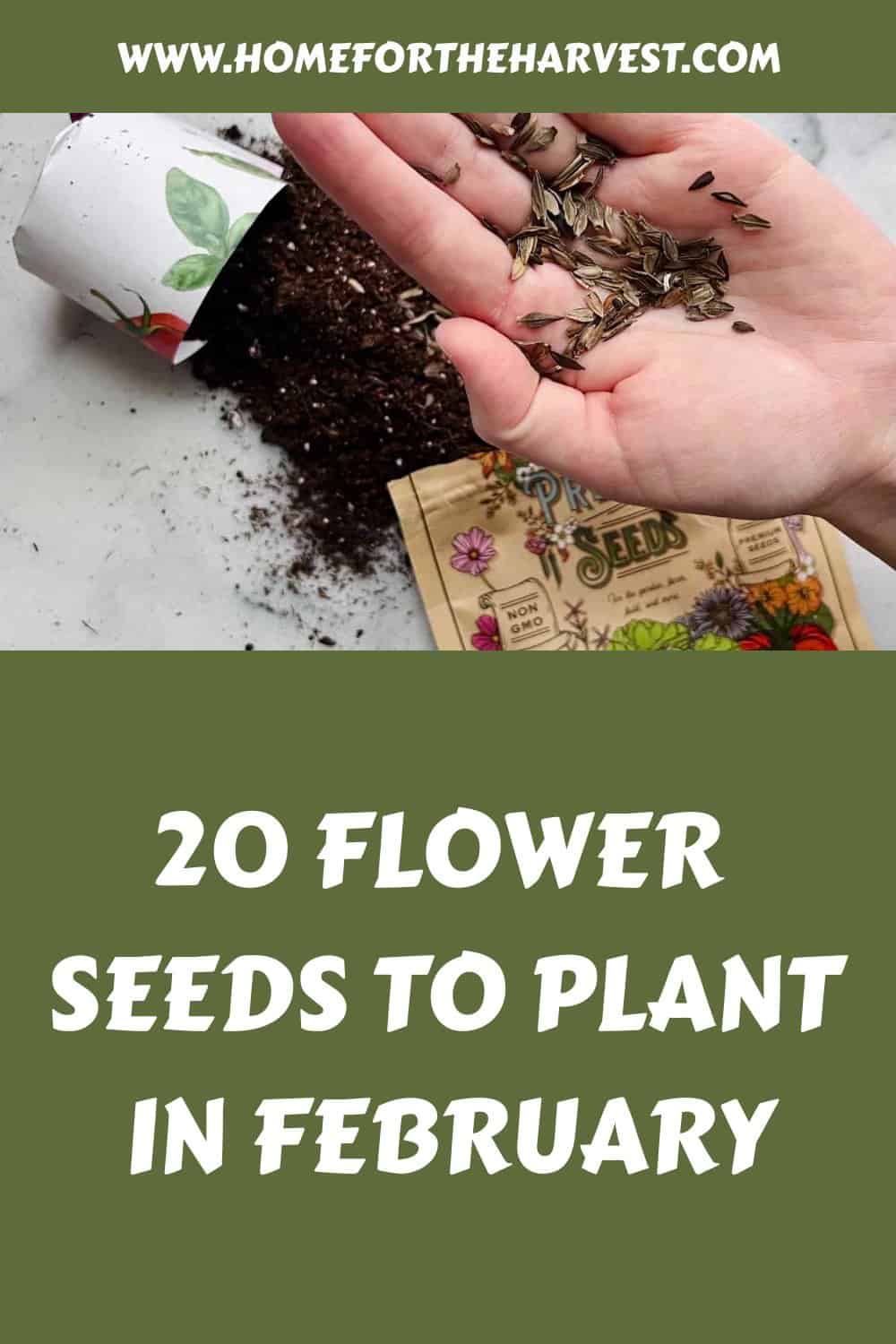February is the perfect month for sowing some of our favorite flowers. With so many options, it can be hard to know where to begin – but don’t worry, we’ve got you covered. From marigolds and snapdragons to lavender and echinacea, there’s something here for everyone. Winter may still have some chilly days left in store but your garden will soon be blooming!
Most gardeners in cooler climates will be planting these seeds indoors in February. You can also winter sow them if you live in a cool climate or direct sow them if you live in a frost-free climate.
This post is sponsored by True Leaf Market, a national certified organic, non-GMO seed and horticultural company based in Salt Lake City, Utah. The True Leaf Market staff specializes in supplying a large selection of conventional, heirloom, and organic seeds to home gardeners everywhere.
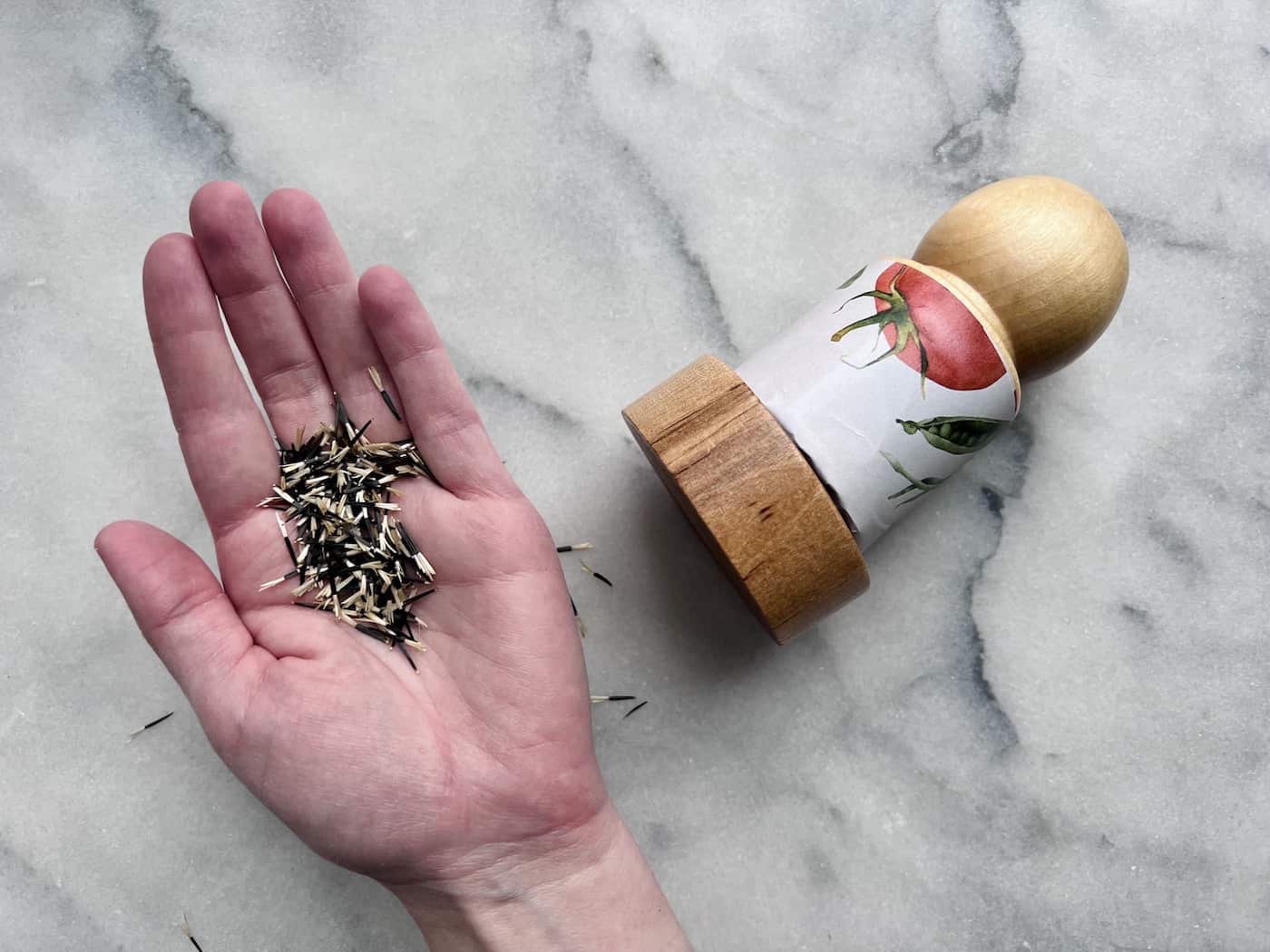
1. Marigold
Marigolds, seasonal annuals, come alive with vibrant blooms from late spring to early fall – the perfect choice for gardeners wanting enduring color. They’re also wonderful companion plants in the vegetable garden and can be put to use in cute little flower arrangements.
Planting marigold seeds in February will ensure a vibrant display of these beautiful flowers throughout the growing season. While you can certainly direct sow them when the soil has thawed and warmed up, starting them indoors in late winter lets you enjoy the blooms (and attract pollinators) much earlier.
These hardy little flowers come in many different varieties ranging from classic French marigolds to pom-pom African marigolds, all boasting unique colors and shapes that add interest to any landscape design. And, of course, there’s the lovely pot marigold (calendula). Whether you choose one variety or mix several together, there’s sure to be something that fits perfectly into your garden plan.
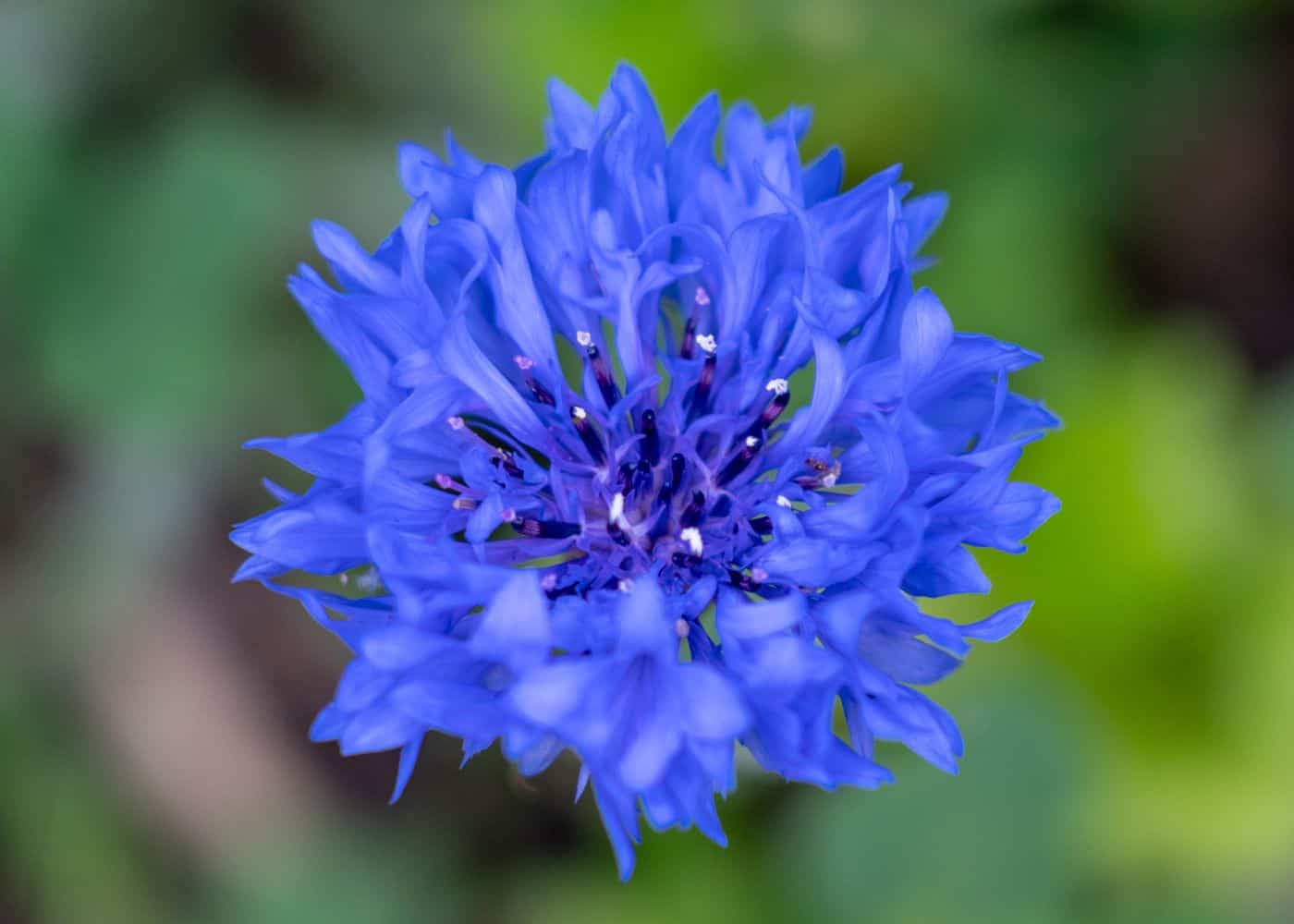
Bachelor’s button (Centaurea cyanus) is a lovely annual native to the Mediterranean. While they come in shades of pink and purple, it’s the blue flowers that are truly divine. And fortunately, these flowers are quite easy to grow from seed.
While you can start them indoors if you like, these seeds work quite well with the outdoor winter sowing method in cooler climates. And if you happen to live in a frost-free climate, feel free to direct sow them in place during the month of February. Whichever method you choose, keep the seeds moist until they have germinated and be sure to give the baby seedlings lots of light.
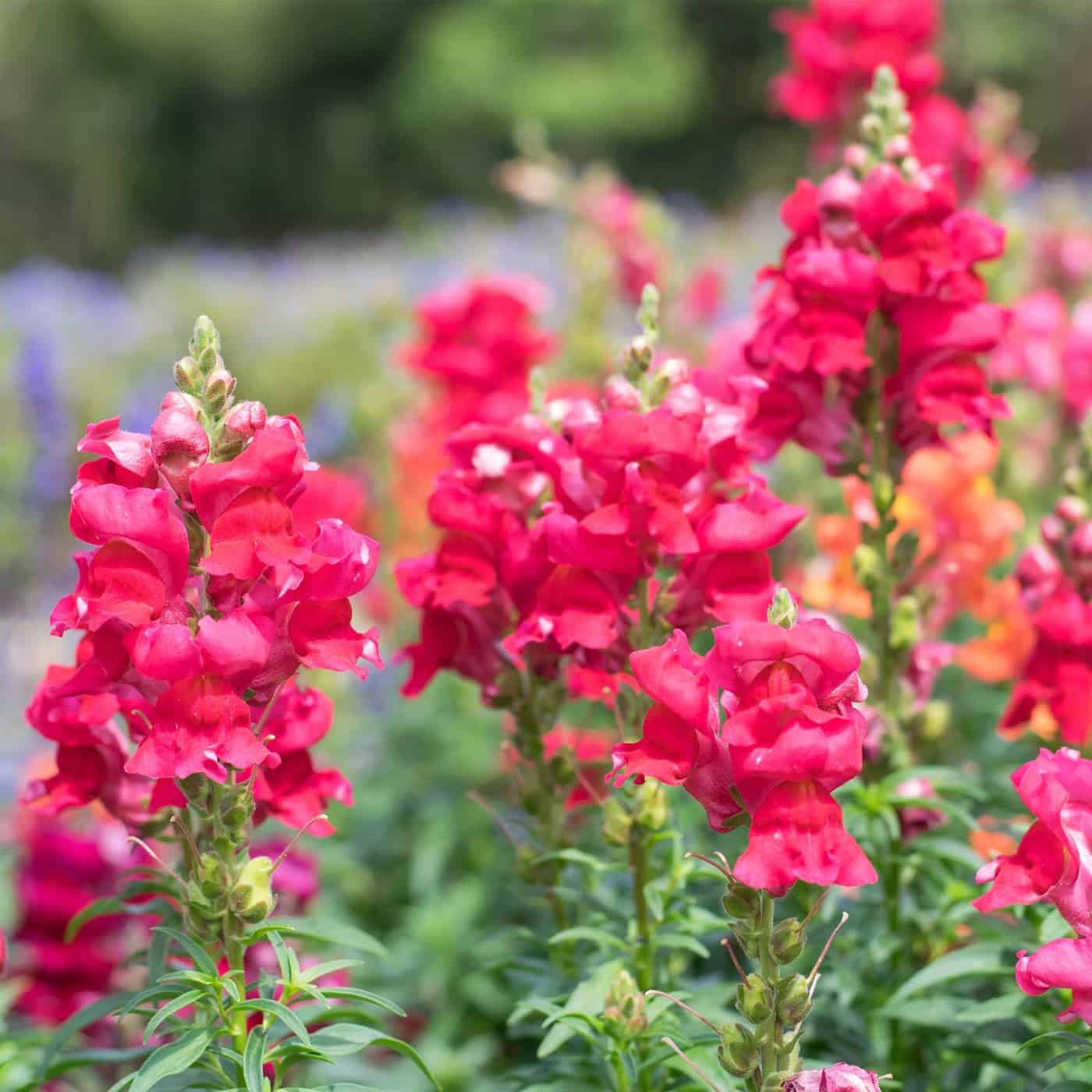
3. Snapdragon
Snapdragons are commonly started indoors as early as February as these plants usually take at least 3-4 months before they start to bloom. You can plant them indoors in February, and transplant them outdoors after the last spring frost.
The seeds take a few weeks to sprout and will take another few weeks to grow large enough to transplant. This timing usually works out when you plant the seeds between 6-10 weeks before your local average historical last frost date. Make sure to harden off the seedlings for 2 weeks before transplanting them outdoors. Start by placing them in a shady outdoor spot for a couple of hours, and work up to longer time periods and then direct sunlight.
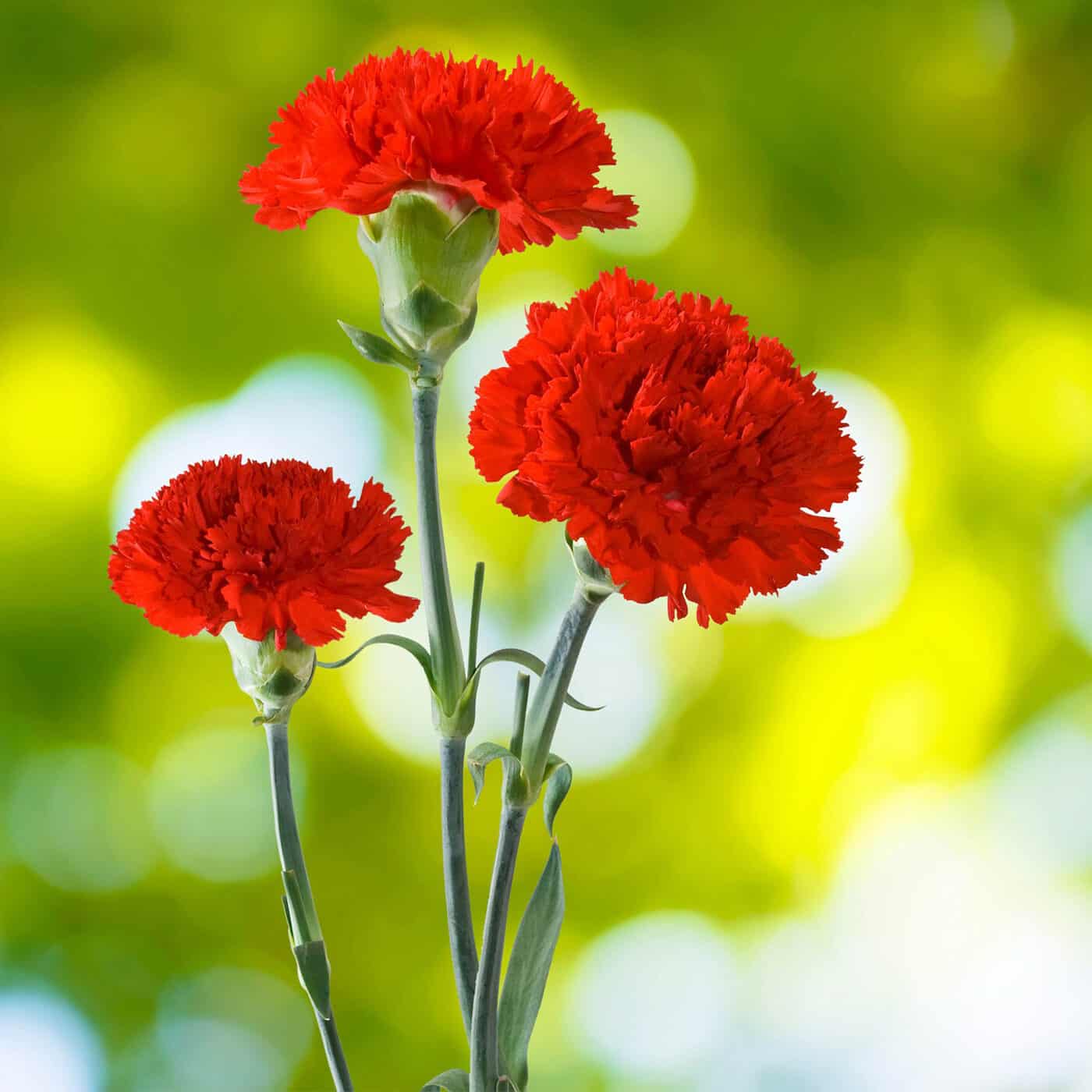
4. Carnations
Carnations, also called Dianthus, are easy to grow and make lovely cut flowers. But like many of the other popular blooms in the cutting garden, carnations do need to be started indoors quite early. This is usually about 3-4 months before the local last spring frost date, but you can start them in February even in warmer areas – you just might get your flowers blooming after the local flower farmers.
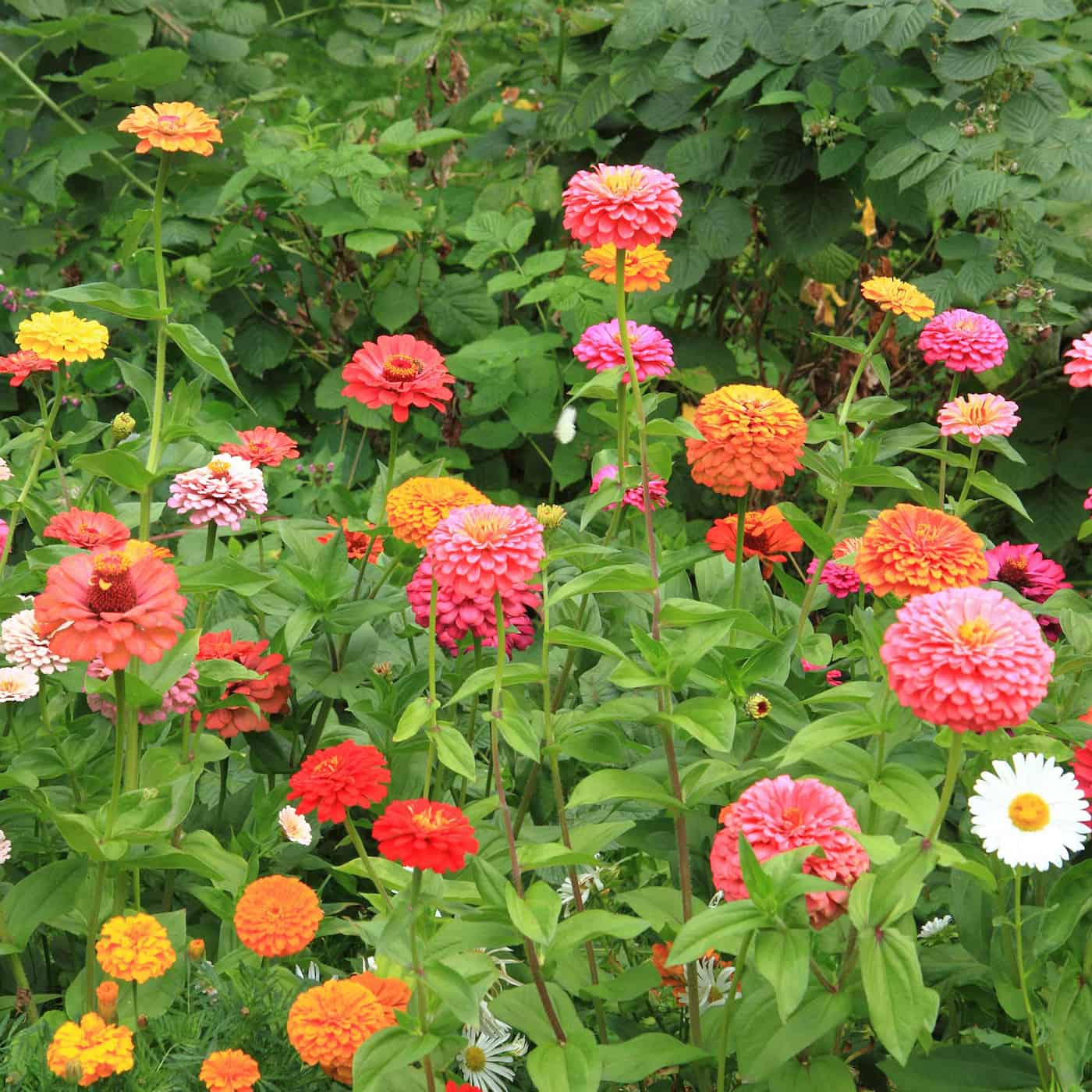
5. Zinnia
Zinnias, while not as commonly planted indoors as some of these other flowers (because they don’t love transplanting), can certainly be sown in February. These plants are heat-lovers (like tomatoes and peppers), so you don’t want to be direct seeding them outdoors unless your nighttime lows are above about 50°F (10°C).
If you’re in a chillier location and you’d like earlier flowers, you can start them indoors 1-2 months before your local last frost date. If possible, choose a smaller variety if you’re starting them indoors (such as the gorgeous Lilliput zinnias rather than the big California Giants).
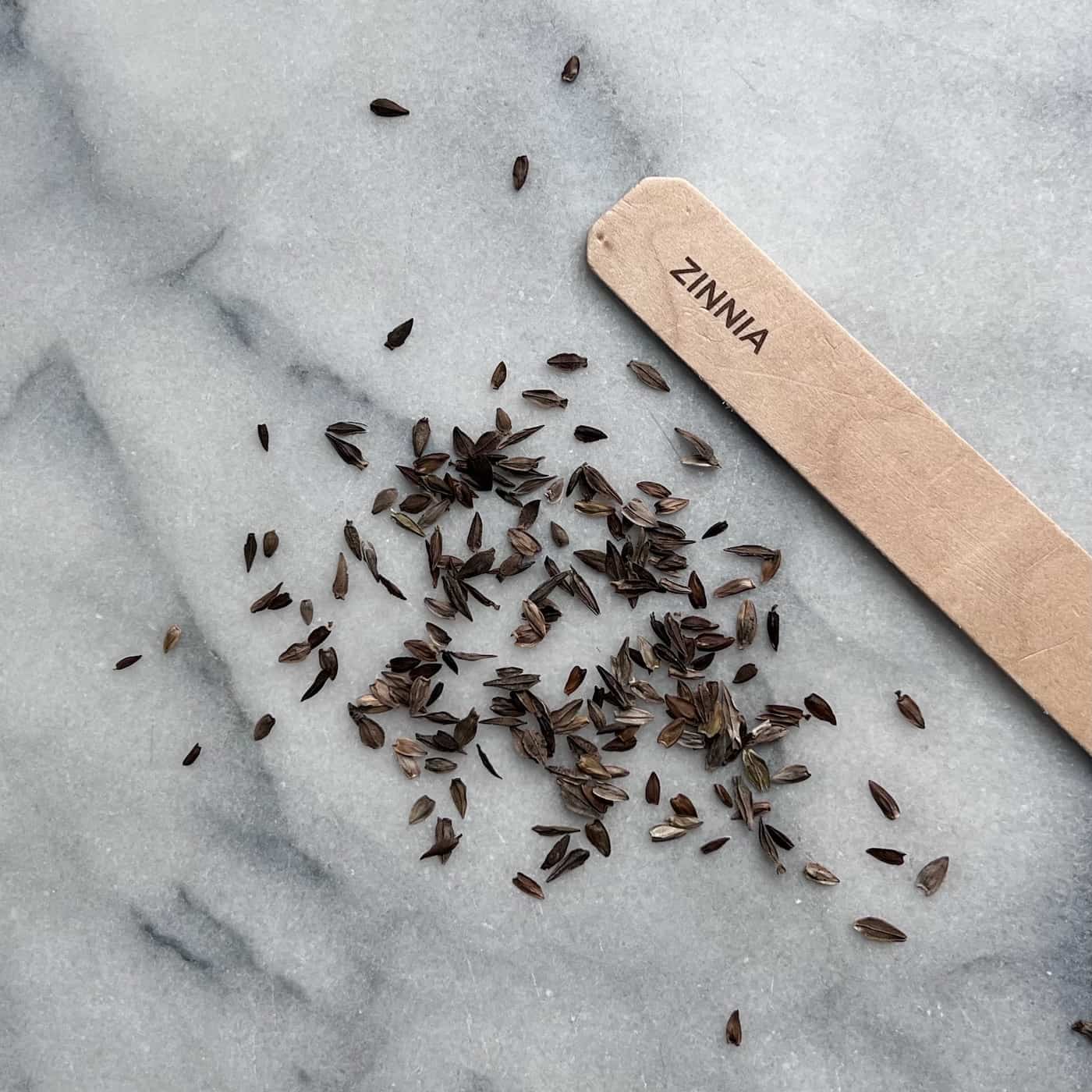
6. Shasta daisy
Shasta daisies are another cheerful flower that you can start from seed in February. Classic cultivars include Alaska, Snow Lady, and Snowland. For something a little different, check out Silver Princess and my favorite – Crazy Daisy (which has such pretty extra petals).
The favorite low-maintenance white daisy with a yellow center, Shasta daisies can be direct sown, but you’re more likely to get a good show of blooms up front if you plant them in late winter or early spring. These seeds are usually planted 6-8 weeks before the local last frost date, which usually works out well in terms of timing for Zones 6-8. If you’re in a cooler zone, like Zones 4-5, consider winter sowing your daisy seeds in February (that’s what I do!).
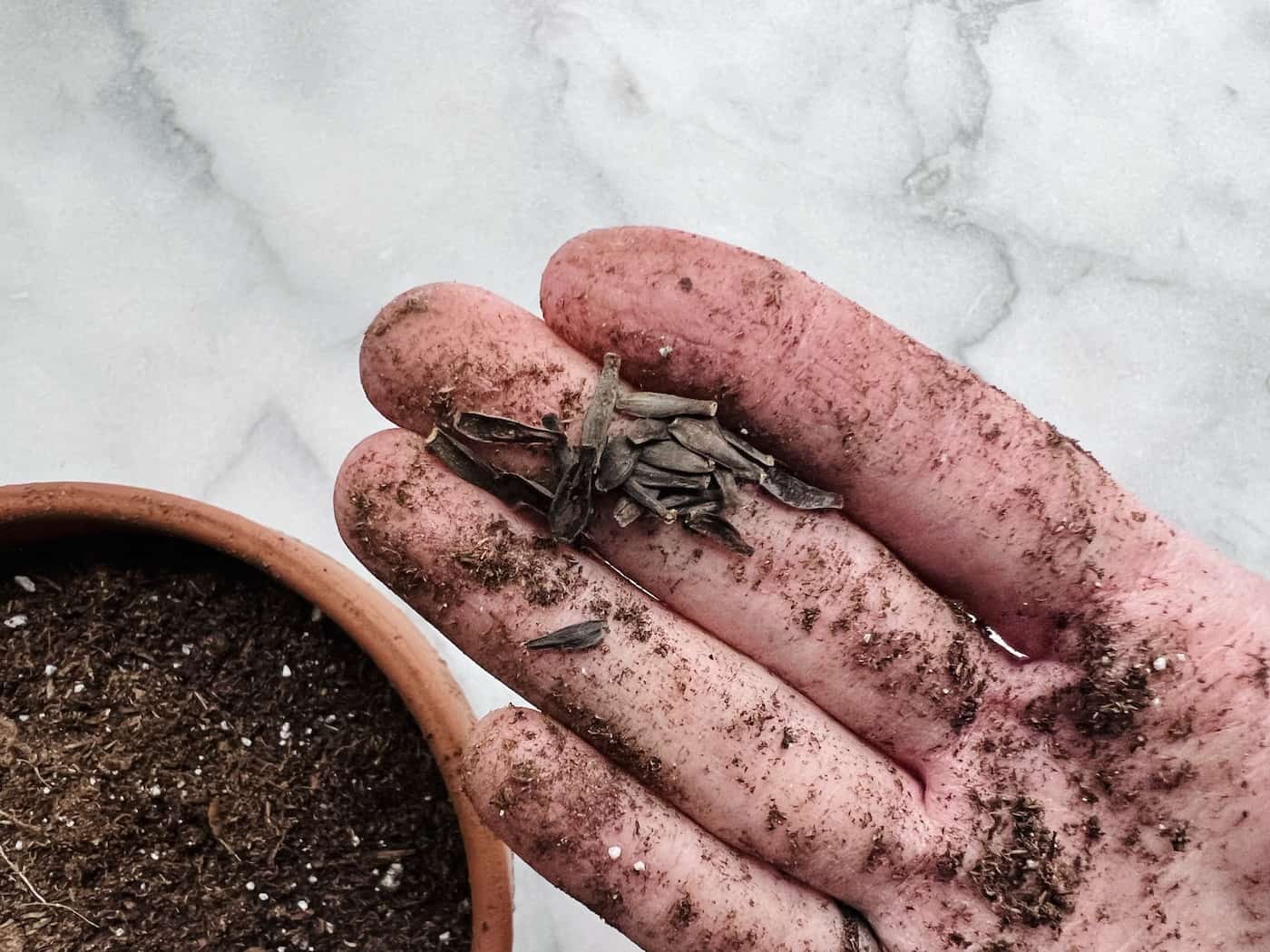
7. Dahlia
Dahlias are showstopping flowers that can bring vibrant color to any garden. While they’re most commonly grown from tubers, it is completely possible to grow dahlias from seed.
The Figaro Series is an easy-to-grow mix that will thrive in many hot, dry climates. Growing from seed is simple and requires minimal maintenance once established in the soil.
8. Campanula
Campanula is another flower that needs an early start if you’d like blooms this season. Plant them indoors in your seed trays 2-3 months before the average last spring frost in your area. You can start them even earlier if you like, which can be beneficial if you live in a climate where the weather gets quite hot in late spring.
9. Begonia
Begonia is another traditional flower you can start from seeds in the wintertime. Whether you are used to growing fibrous or tuberous types, there are many flower colors and shapes to choose from. They make lovely potted indoor plants or patio plants and can also be planted right out in the garden.
The Nonstop series of tuberous begonias is a popular group of cultivars to grow from seed. They’re available in a wide range of colors, including scarlet mocha, deep salmon, apple blossom, and mocha deep orange. The plants grow to a compact 8″-10″, making them lovely for patio planters, window boxes, or the very front of a flower border garden.
For hanging baskets, ‘Santa Cruz Sunset’ is a nice trailing cultivar with angel wing-type foliage. For more substantial plants, try the old-time favorite ‘Dragon Wing Red’.

10. Echinacea
Echinacea blooms from late spring through summer with vibrant flowers that are attractive to butterflies and other pollinators. While the most common varieties are purple, there are now lots of different colors available, including orange, white, and pink.
There are a few ways you can plant echinacea seeds in February:
- Winter sow them between January-March (good for cold zones)
- Start them indoors 6 weeks before your last expected frost date (good for mild zones)
- Plant the seeds directly into the ground after danger of frost has passed (only for the warmest climates without expected frost)
When transplanting, space plants about 18 inches apart for optimal growth. Water regularly during dry spells throughout the growing season. Some varieties, such as Pow Wow Wild Berry, can flower in their first year if you start them in February.
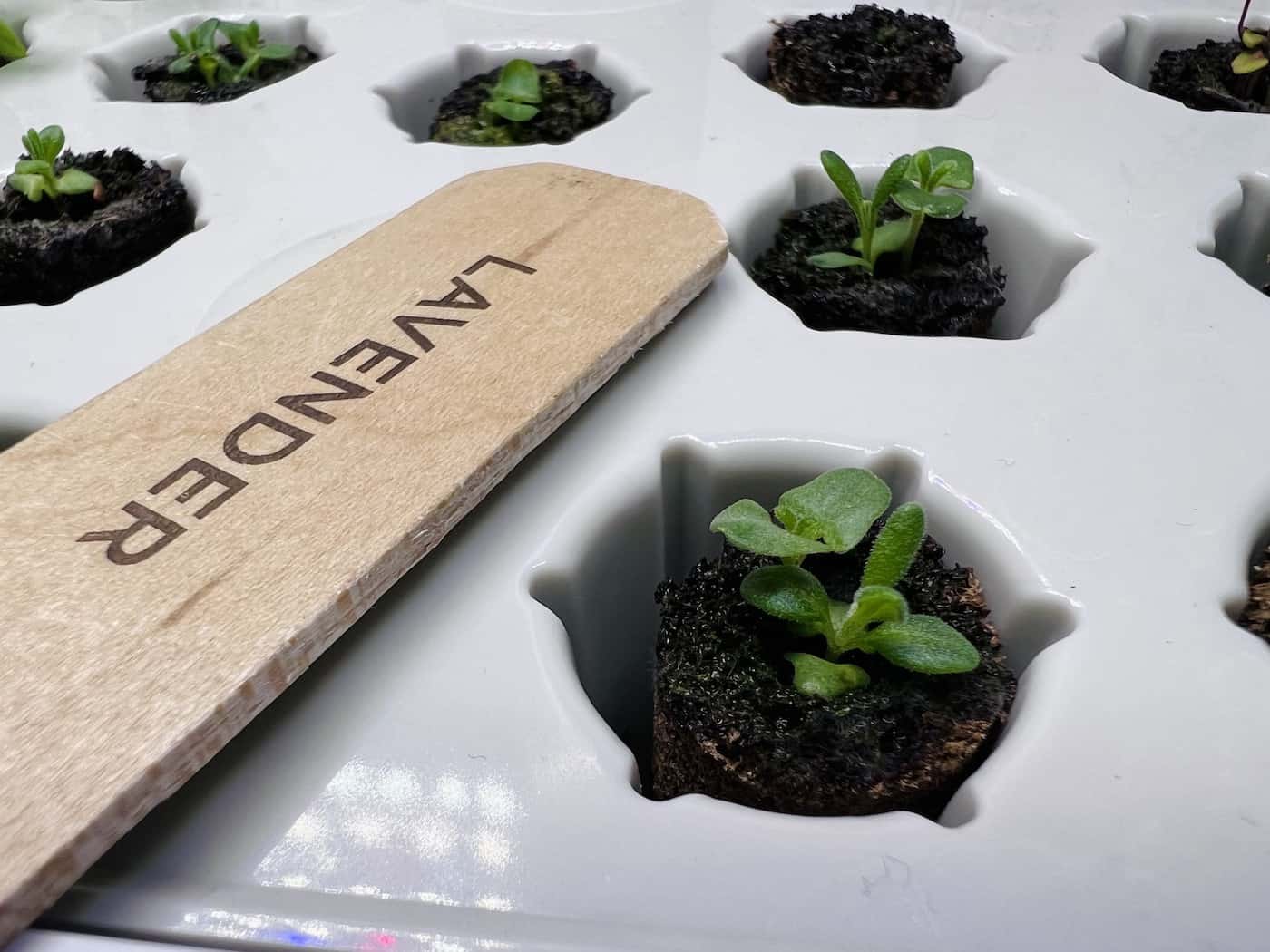
11. Lavender
Lavender is a beautiful and fragrant flower that can be planted in February. Well-drained soil and full sun are ideal for lavender cultivation, making it a great option for North American gardeners. With its delicate purple blooms, lavender adds color to outdoor spaces while providing a pleasant scent when the flowers are in bloom.
Lavender seeds are most commonly started indoors. You can use seedling trays with separate cells, soil blockers, or even a smart garden with a seed-starting deck. Just beware that lavender seeds do take 2-4 weeks to germinate. I planted them in my smart garden at the same time as some basil and thought they were never going to come up (although of course, they eventually did).
Once planted, water them regularly but don’t overdo it – too much moisture can cause root rot or fungal diseases. In hot climates, layering mulch around the lavender plants can help maintain soil moisture and keep it cool during dry periods.
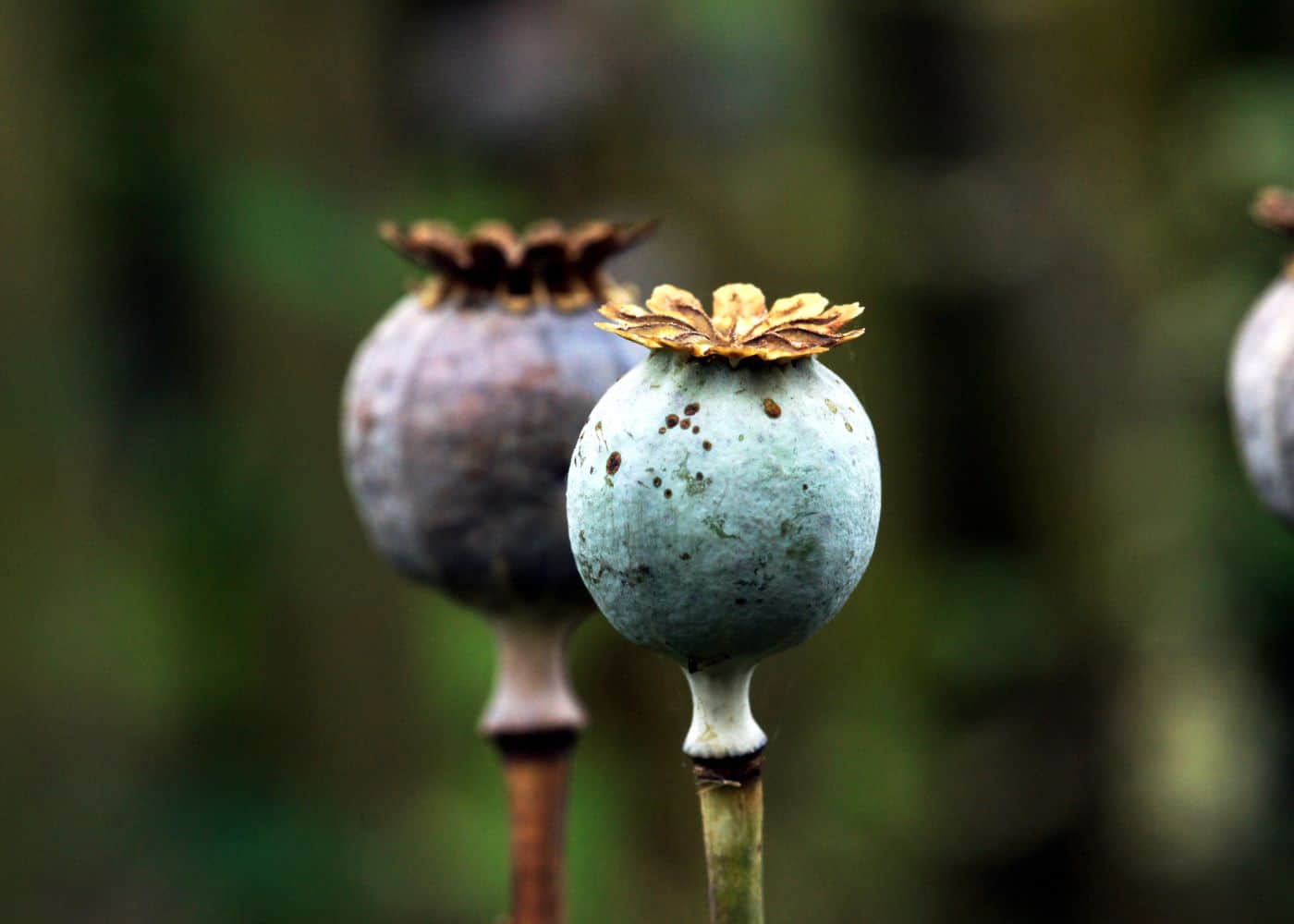
12. Poppy
Poppies come in an array of shades, from the traditional scarlet to cheerful orange, pristine white, blushing pink, and even azure.
A popular type of poppy is the California poppy (Eschscholzia californica). This species produces bright orange-yellow flowers on slender stems throughout the spring and summer months. California poppies thrive in sunny areas with dry soils; they do not require much maintenance once established other than occasional deadheading to encourage more blooms.
Another common type of poppy is the Oriental poppy (Papaver orientale). These poppies produce large blooms that range from deep red to white or pink. The petals are often ruffled or fringed for added texture and interest. Oriental poppies prefer full sun but will tolerate some shade as well as moist soil conditions.
The Iceland poppy (Papaver nudicaule) is the least hardy of the poppy varieties, reaching a maximum height of 12 inches. Its elegant flowers are crepe-like, smaller than those of other species, and sit atop thin wiry stems. To ensure its survival during cold winters, it is recommended to mulch heavily around its base prior to frost.
13. Morning glory
Morning glory is a beautiful and vibrant flower that can add a splash of color. It’s easy to grow, with bright blooms in shades of pink, purple, blue, or white. The flowers open up in the morning and close at night, hence its name.
These plants will quickly spread out over trellises or fences if given something to climb on; they also look great cascading down from hanging baskets or window boxes. You can even train them along an arbor for an impressive display. Morning glories don’t require much care once established – just water regularly during dry spells and remove spent blooms as needed throughout the season to encourage more flowers to form.
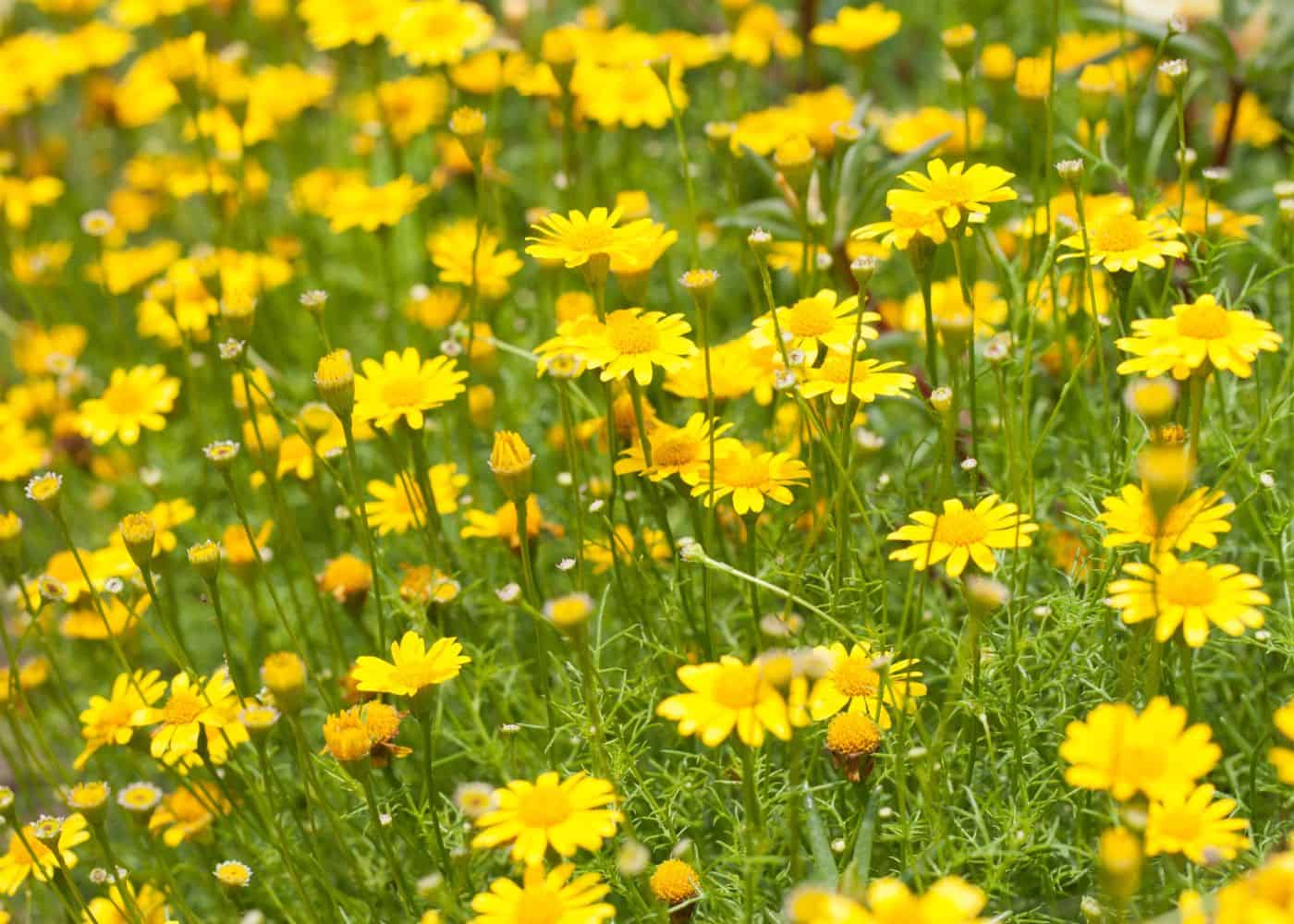
14. Dahlberg daisy
Dahlberg daisy (Thymophylla tenuiloba) is a beautiful and easy-to-care-for plant that works well as a flowering ground cover. These cheerful blooms are native plants and grow naturally in the southern states (Alabama, Florida, Louisiana, Mississippi, South Carolina, and Texas).
Dahlberg daisies are usually grown as an annual plant, and can readily self-seed in suitable growing areas. They have bright yellow petals and a darker yellow center, making them an eye-catching addition to any landscape.
15. Milkweed
Milkweed (Asclepias syriaca) is an essential plant for pollinators with domed clusters of pink-purple flowers. It’s known as a vital food for the caterpillars of monarch butterflies. The seed pods are also commonly dried for fall and winter floral arrangements.
Milkweed can be started indoors, but the seeds need to be cold-stratified first (I usually put them in a moist paper towel in the fridge for a couple of months). Much easier, though, is to winter sow your milkweed in the late winter.
Once established, milkweeds need very little maintenance beyond occasional watering during dry spells; however, they do benefit from regular weeding around their base since competing weeds can steal away nutrients from their roots.
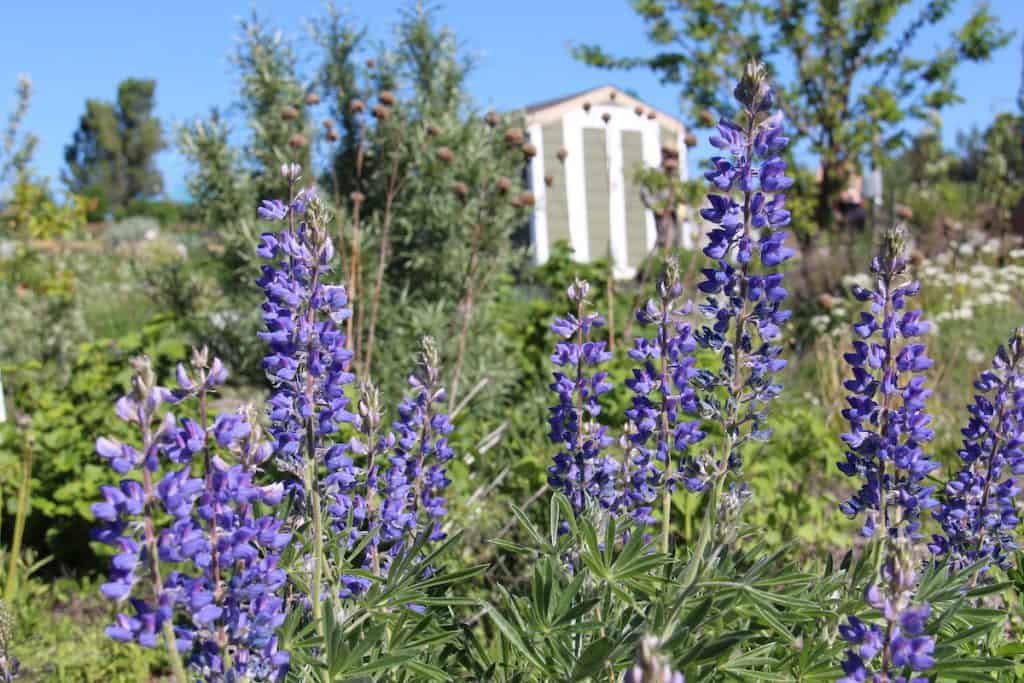
16. Lupin
Lupins have been cultivated for centuries due to their showy flowers and attractive foliage. Lupins make excellent additions to any garden, providing long-lasting color throughout the summer months when many other perennials have finished blooming.
They also attract beneficial insects like bees, butterflies, and hummingbirds which help support local wildlife populations while adding beauty at the same time. Plus, these hardy plants require minimal maintenance once established so even novice gardeners can enjoy them without too much effort involved.
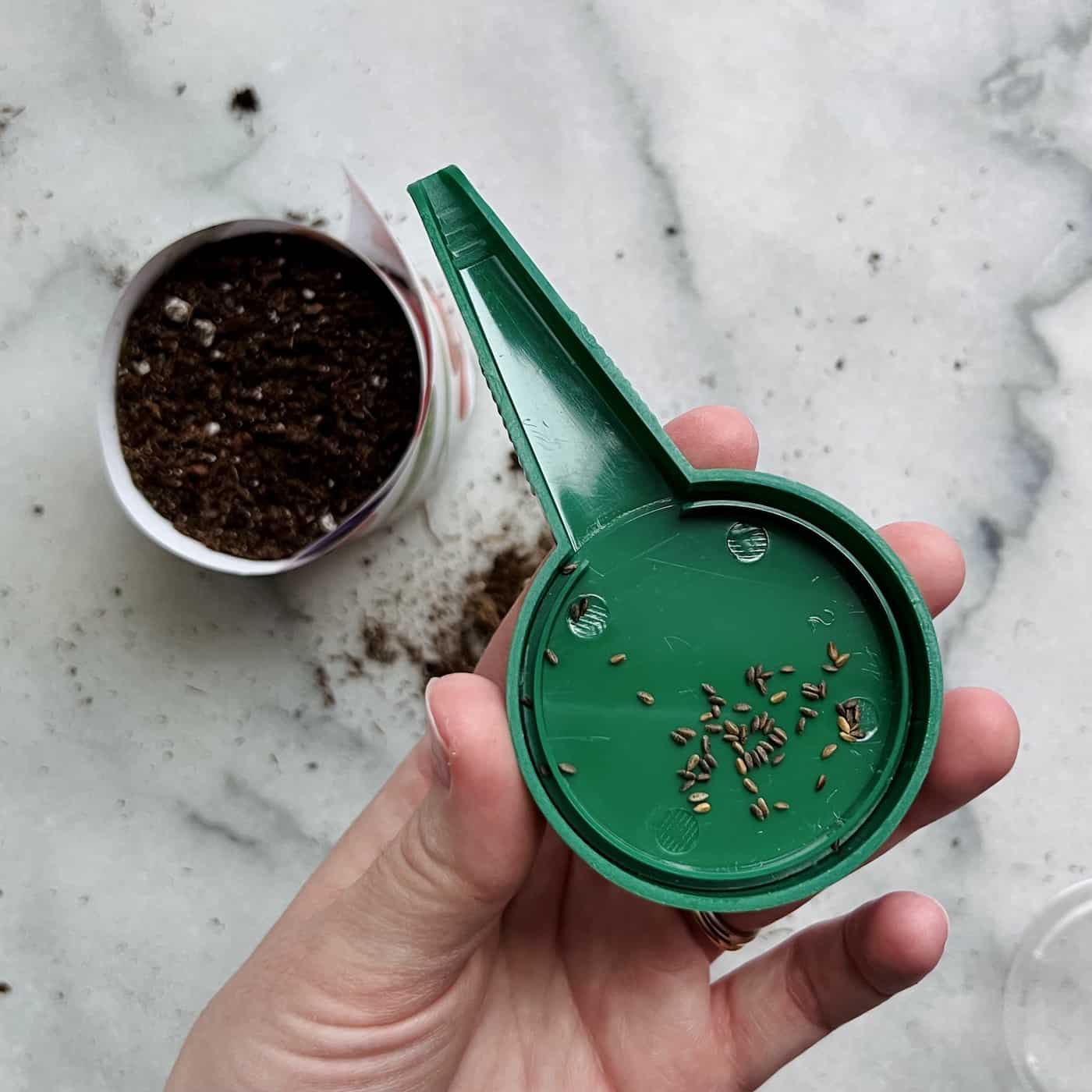
17. Salvia
Salvia blooms come in many hues (usually purple, red, or white). Some have thin spikes of flowers while others have more of a fluffy appearance. The seeds are quite small, so it’s usually easiest to start them indoors where it’s easier to keep track of them.
Lavender sage (Salvia farinacea) is a favorite among gardeners due to its attractive deep purple flowers which bloom from summer through fall season if deadheaded regularly. Its aromatic foliage adds interest to any garden bed while providing nectar sources for pollinators like bees and butterflies throughout the growing season.
Pineapple sage (Salvia elegans) is an herbaceous perennial with bright green foliage that smells like pineapple when crushed. In late summer through early fall this plant produces vibrant red tubular-shaped flowers on upright stems up to two feet tall making it a great choice for adding color contrast to your landscape design plan.
Finally, Scarlet sage (Salvia coccinea) offers stunning scarlet-colored blooms on short bushy plants all summer long until frost kills them off at the end of the autumn season. These heat-loving plants thrive best in full sun locations where they will produce plenty of colorful blossoms sure to attract attention from both people passing by your home as well as local wildlife visitors like birds and bees looking for nectar sources during their travels around town.
18. Columbine
Columbine is a cottage garden favorite that can be sown in mid-late winter for first-year blooms. The flowers are usually a bright purplish blue, with five spreading petals and yellow anthers in the center. The plants look best when planted in large drifts, and they provide a long season of blooms.
Popular varieties include ‘McKana’s Giant’ and ‘Colorado Blue’. If you’d like to sow a mix that includes flowers of different colors, try the ‘Origami’ mix or the ‘Dragonfly’ mix.
19. Violas
Violas are old-fashioned faves that are perfect to tuck into your flower boxes or the edge of larger planters and garden beds. Plant them indoors 2-3 months before the last expected frost in your area.
These happy little flowers can be a bit tricky to start from seed, so be sure to follow the instructions on the packet carefully. That said, because the seeds are small, it does make sense to do your planting indoors on a clean, clear surface (even if you’re winter sowing).
20. Impatiens
Impatiens are such a joy to grow from seed, as there are so many more varieties available. They’re the perfect plant for brightening up a shady corner, even if its hot and humid where you live. The plants are low-growing too, making them a nice choice for a flowering groundcover in perimeter beds.
You can start your impatiens in February in almost any climate. The seeds do take a few weeks to germinate, but they then grow quickly and will usually be flowering in under three months. Be sure to harden off the seedlings prior to transplanting out into the garden (or outdoor planters or hanging baskets).
Can you plant wildflower seeds in February?
Yes, you can plant wildflower seeds in February. Planting during the winter can be helpful for some types of wildflowers that require a period of cold stratification before they will successfully germinate.
My favorite method of planting wildflower seeds in February is the winter sowing method. Just place some potting soil in a milk jug or another flexible container, sprinkle in your seeds, and place the container outdoors where it is exposed to sunlight and precipitation. I’ve had success winter sowing wildflowers like yarrow, milkweed, echinacea, and poppies.
What are the easiest flowers to grow from seed?
Growing flowers from seed can be a rewarding and enjoyable experience. Beginning gardeners can have success with a few varieties of blossoms started from seed, like marigolds, zinnias, cosmos, sunflowers, and nasturtiums. These flowers are easy to start indoors or outdoors in most climates and will bloom quickly with minimal effort.
What month is best to plant flower seeds?
The best month to plant flower seeds depends on the type of flowers you are planting and your location. Generally, as temperatures start to become milder, spring is the preferred time for sowing most annuals and perennials in North America. In regions with mild winters, certain hardy plants can be planted outdoors before the last frost date, either in late winter or early spring. If you live in a warmer climate, fall may be a better option for planting certain varieties of flowers that prefer cooler weather.
Before you go…
February is the perfect time to get your garden ready for spring. Planting flower seeds in February will ensure that you have a beautiful array of blooms come springtime. From marigolds and poppies to lavender and echinacea, there are plenty of options when it comes to choosing flower seeds to plant in February. Don’t forget about milkweed, lupin, salvia, Dahlberg daisy, and morning glory too. With so many choices available for flower seeds to plant in February, you can create a stunning garden full of color and life.


